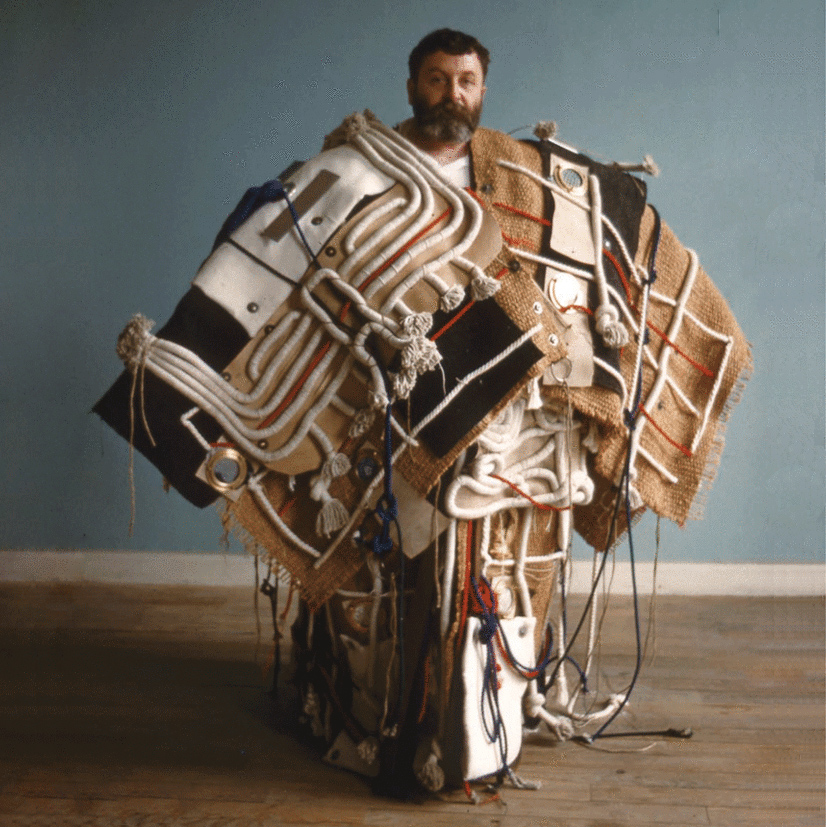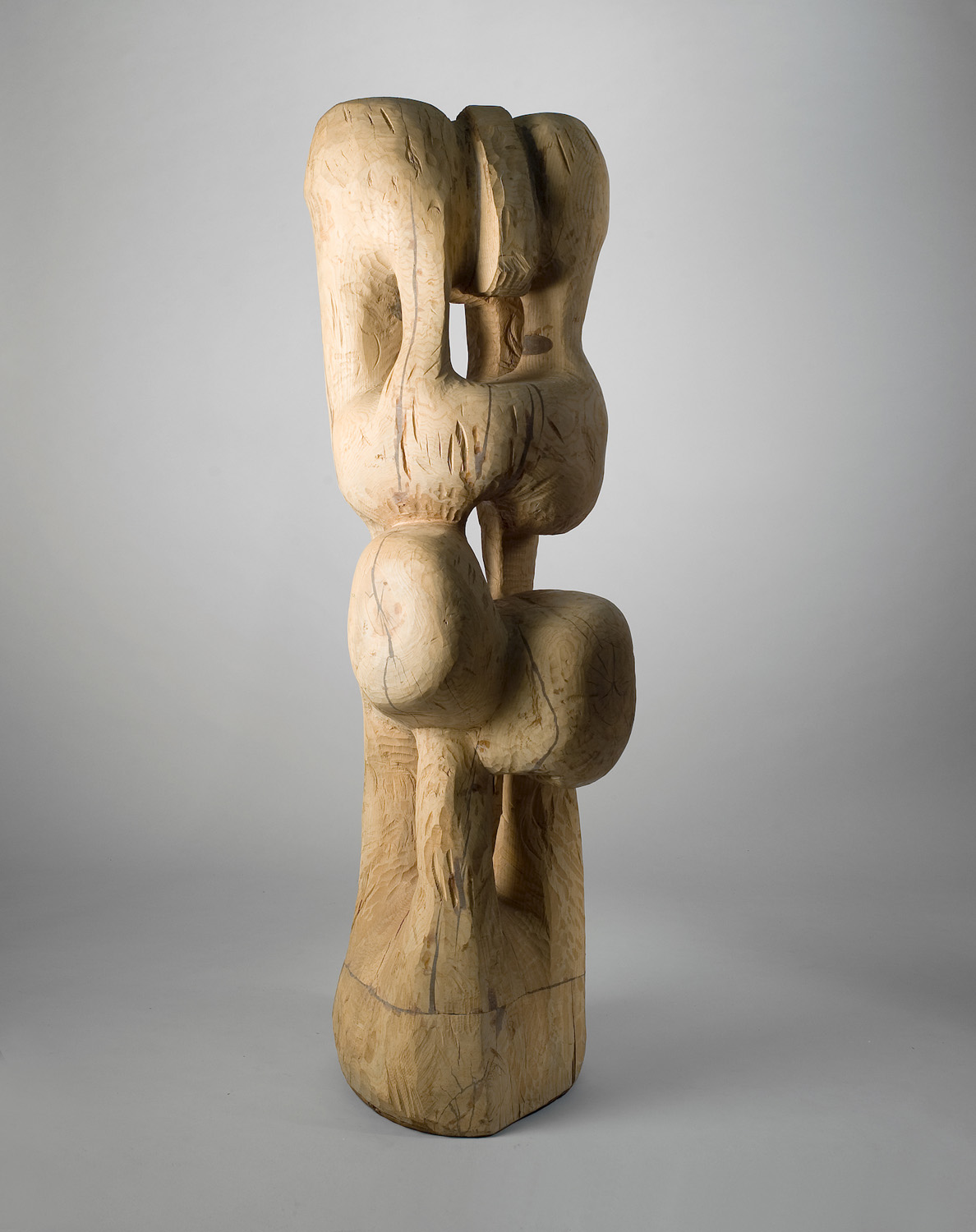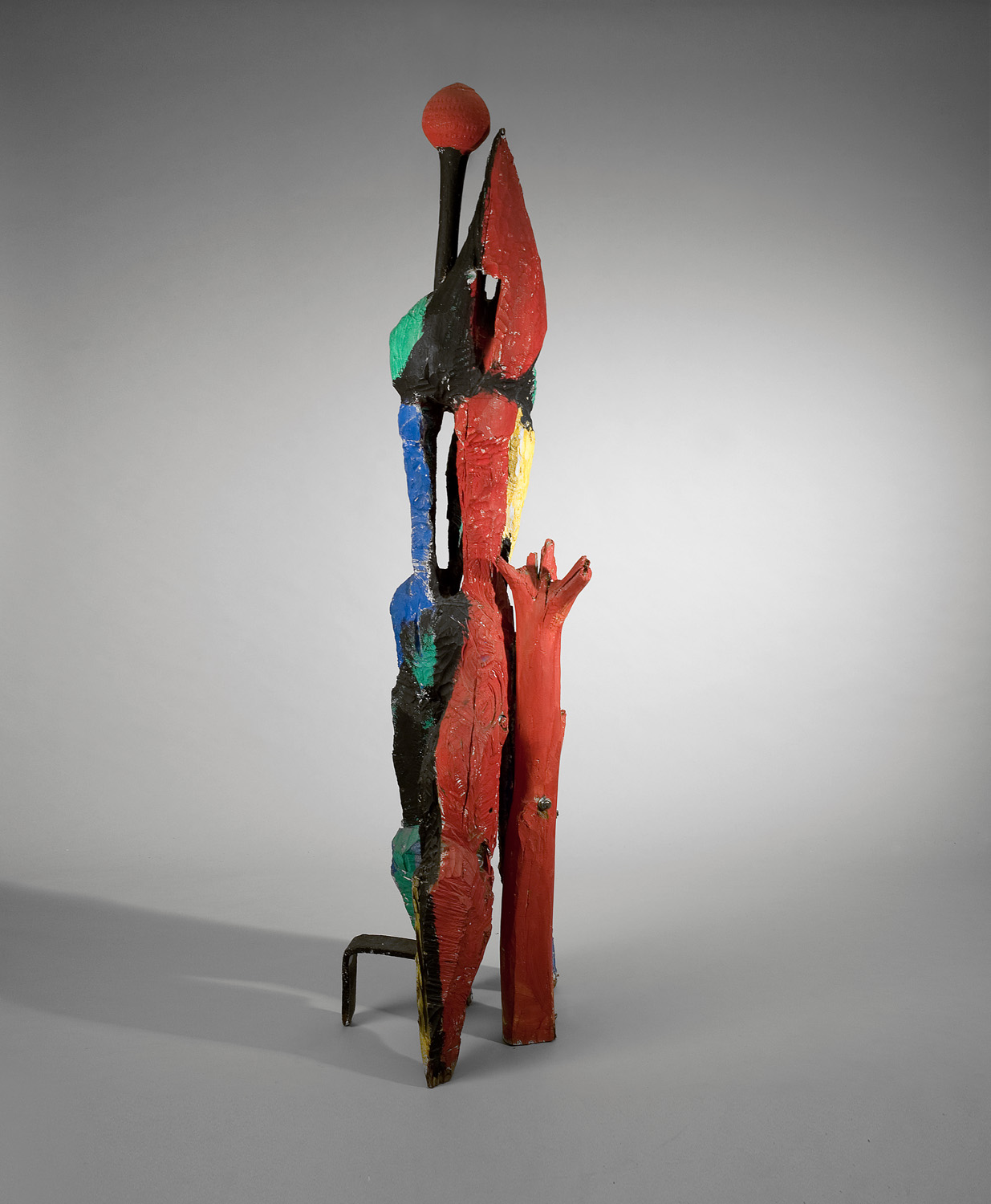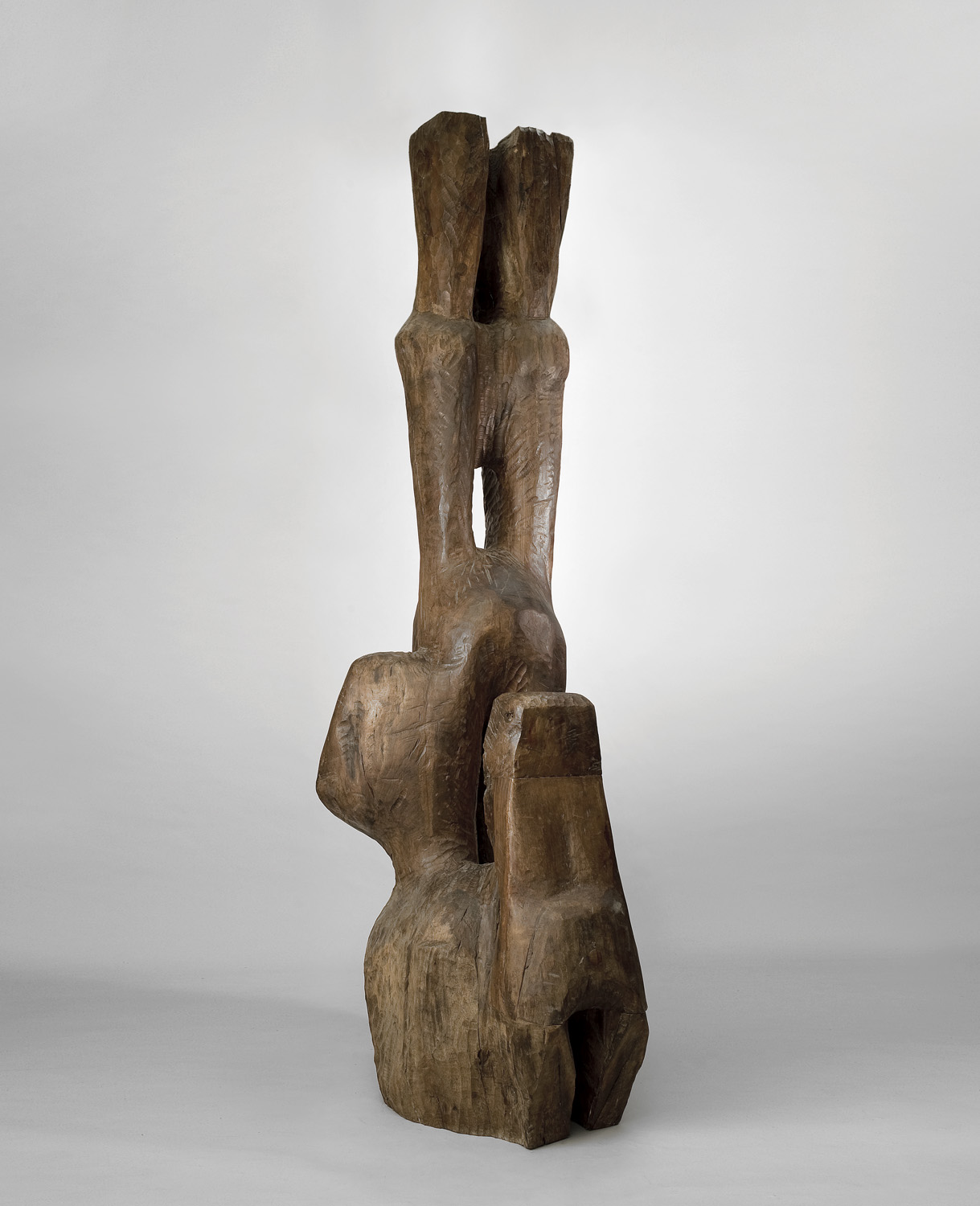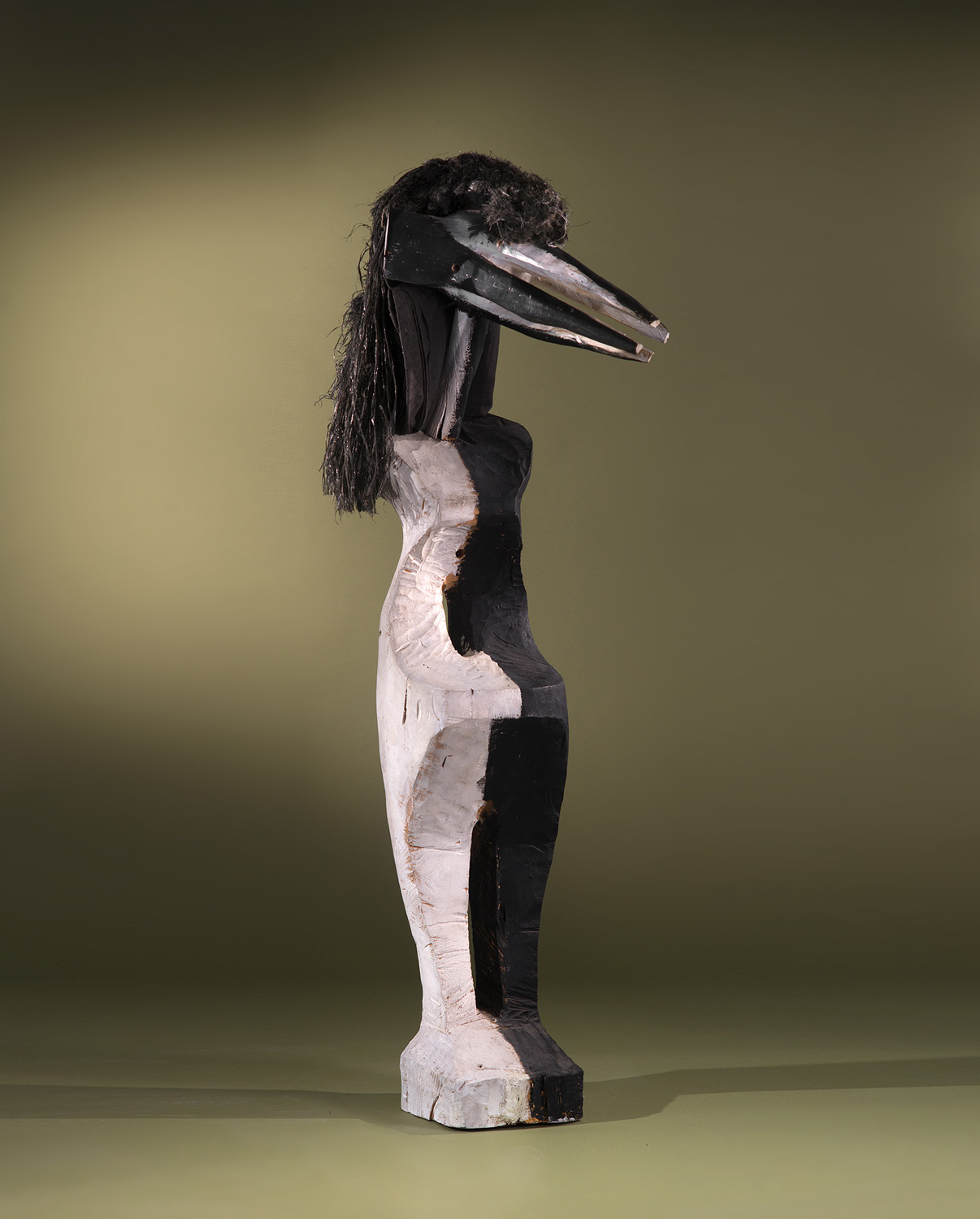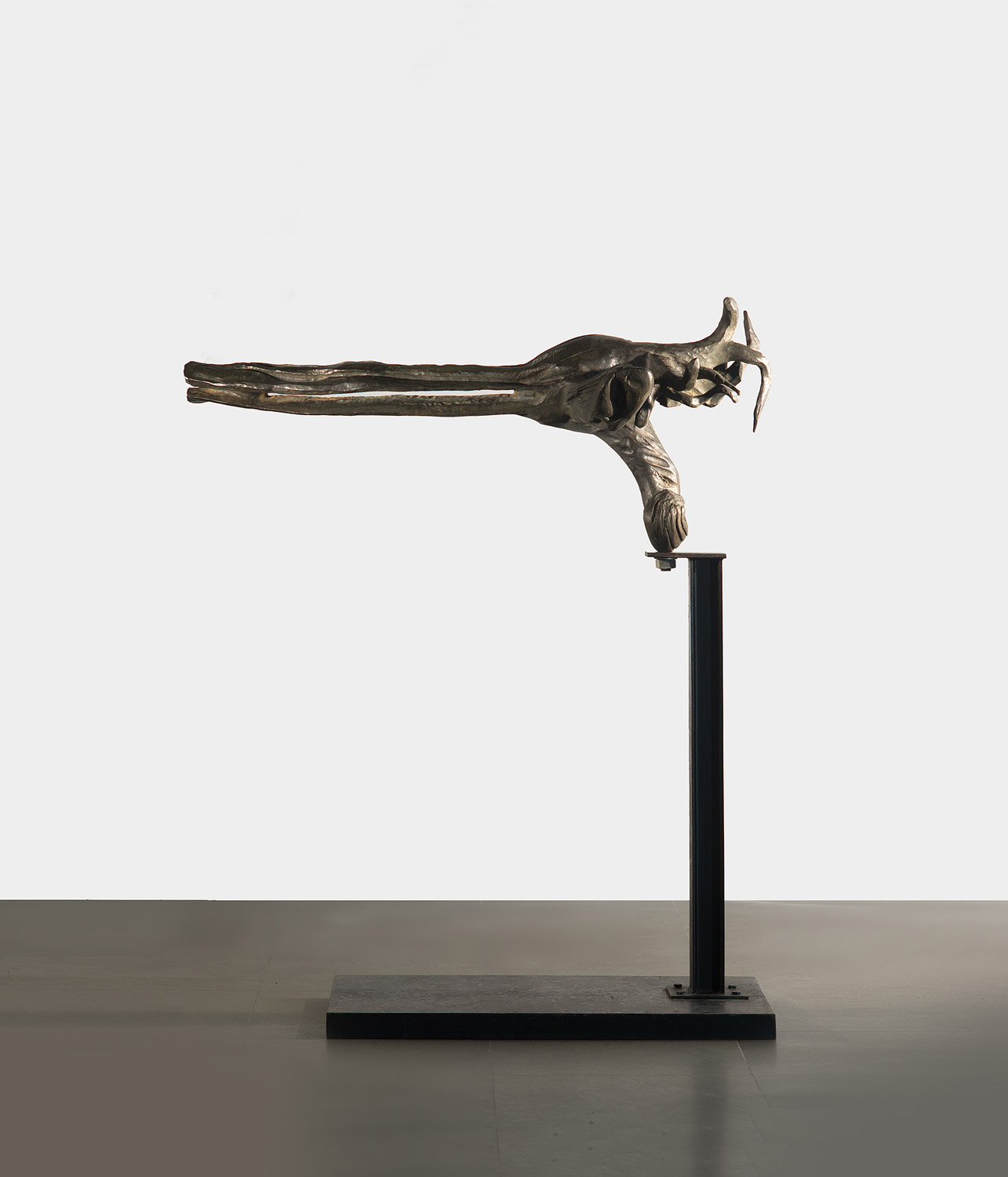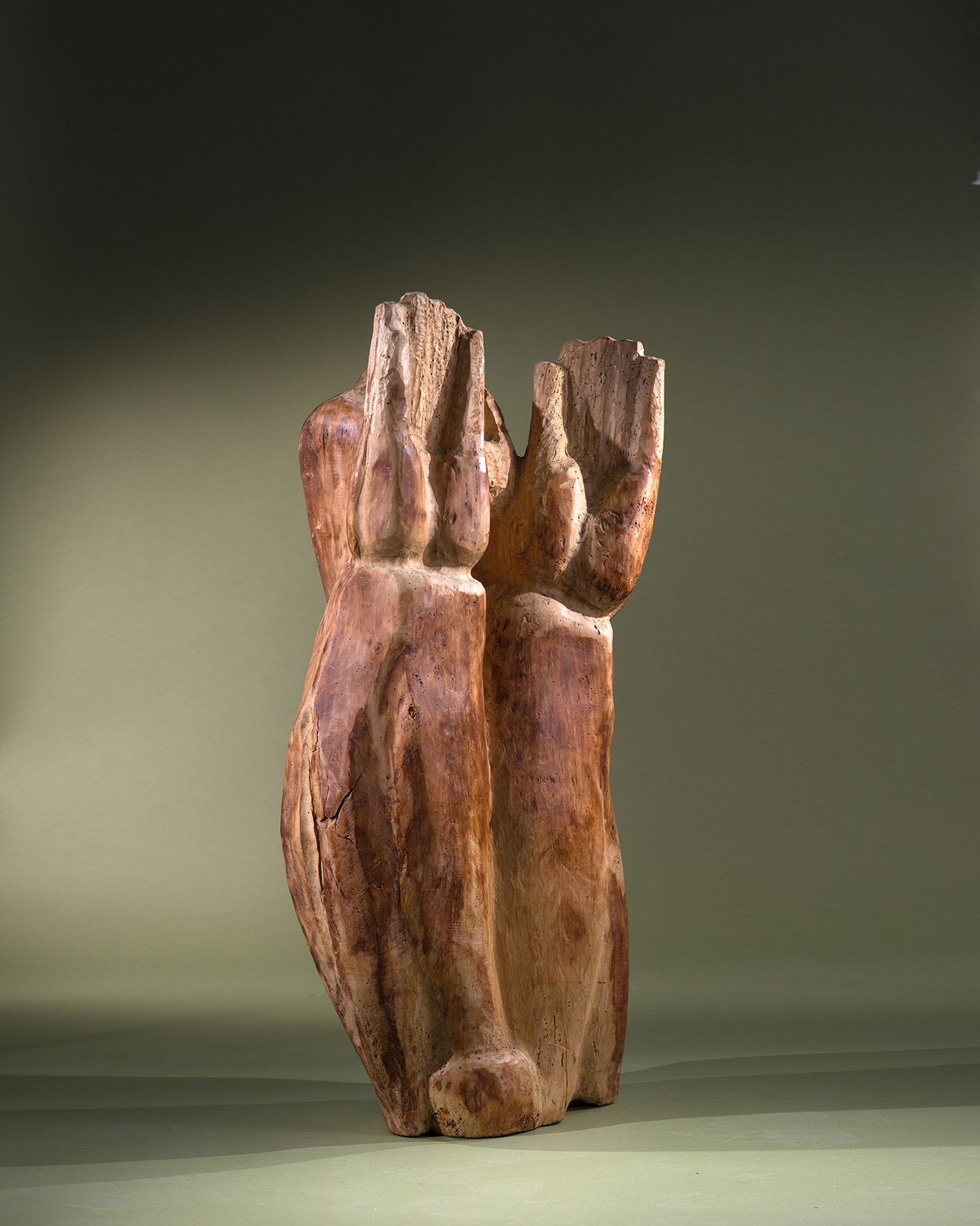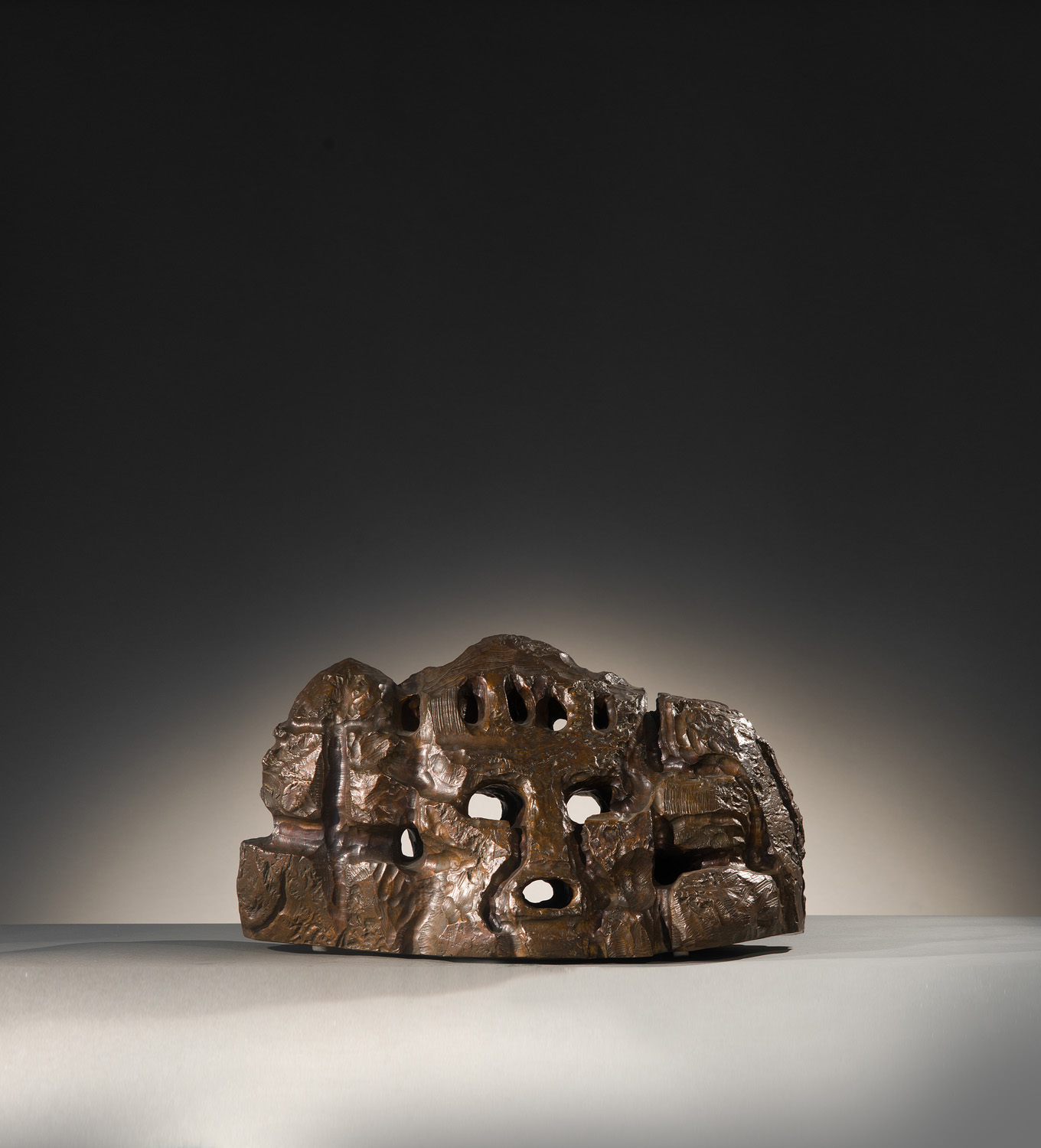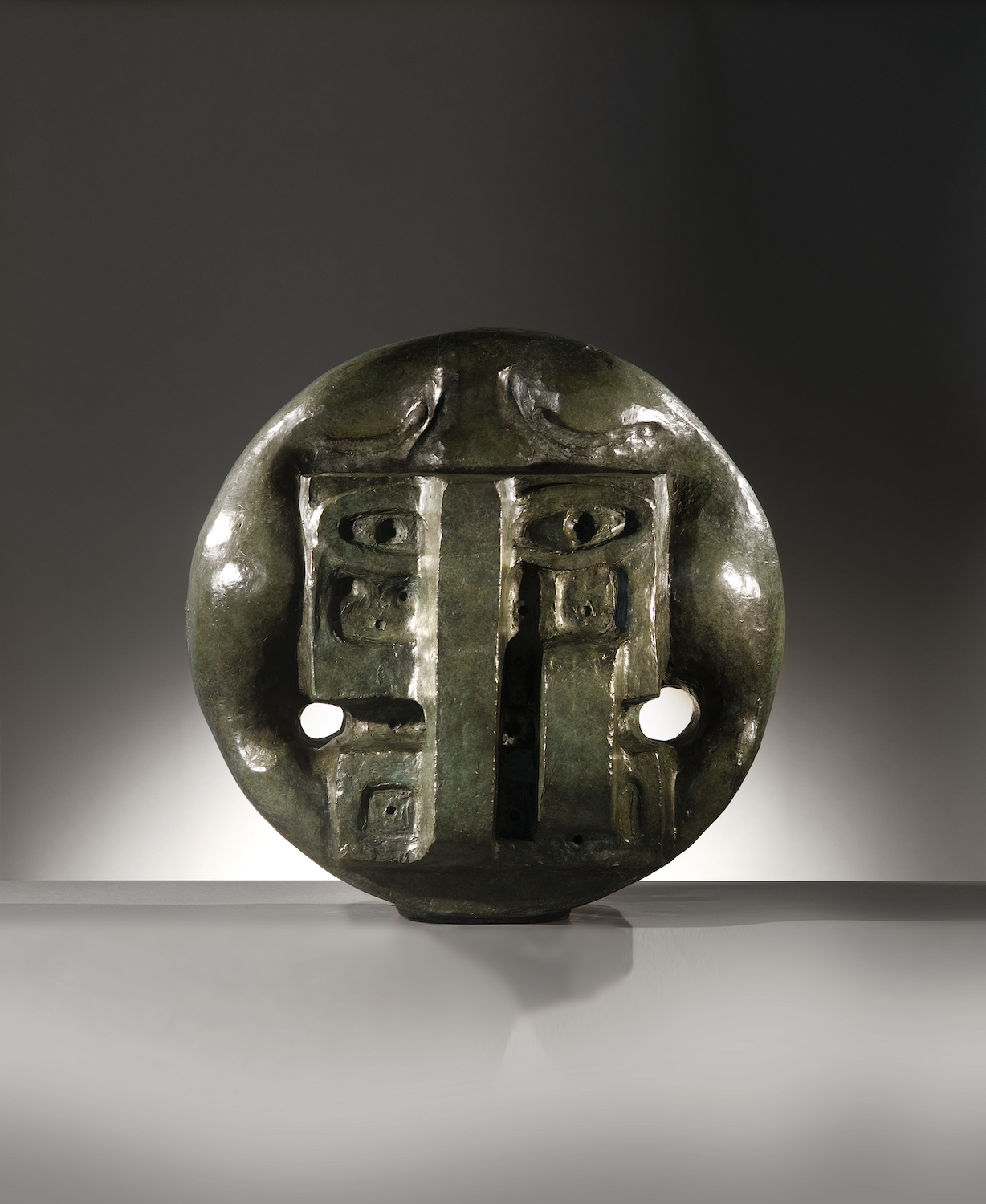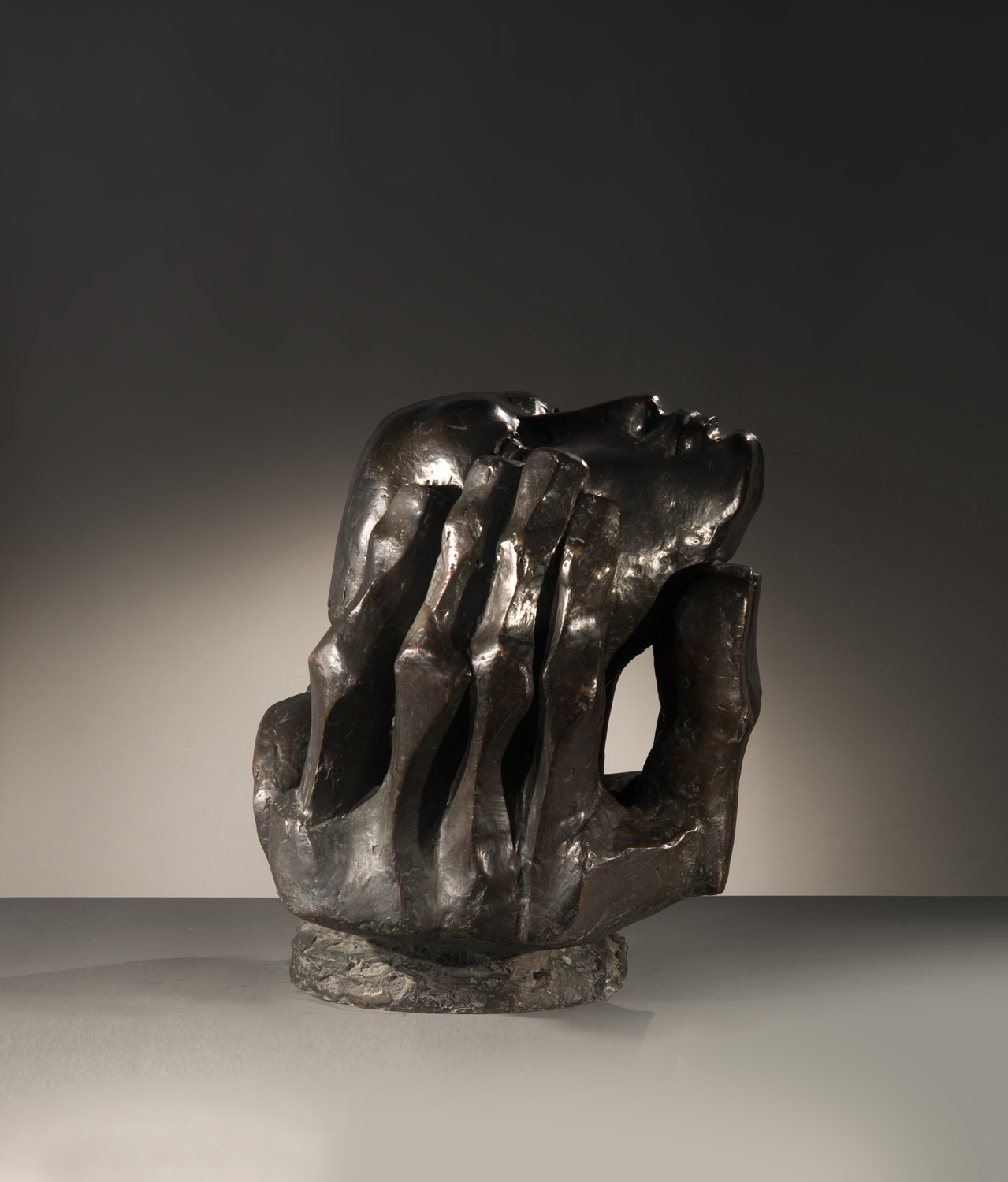Grand couple, bronze, 1947, at the Fondation Pierre Gianadda, Martigny, Switzerland
La nuit ouvrante, bronze, 1948, in the Museum of Grenoble
Tête aux mains, bronze, 1950–1951, in the Musée de Dijon
Lanleff-Demeure No. 4, bronze, 1961, Nathan Manilow Sculpture Park
Demeure 4, 1961, at the Maison de la Culture d'Amiens
Le Manteau, 1962, in the Pompidou Center, Paris. This was the first fabric in sculpture at this Museum and gained him wide recognition.
Trois Pe... rsonnages, 1967, at the Fondation de Coubertin, Saint-Rémy lès Chevreuse, Yvelines Abécédaire, 1967, in the Pompidou Center, Paris
Le Passage, 1969, at the Musée d'Art Moderne de la Ville de Paris
Le cerbère, chestnut, 1977, in the Musée de Lyon
Mur miroir, 1979, in the Pompidou Center, Paris
L'Escalier, wood, metal, plexiglass, rope, paint, 1983 at the Musée de Valence
Le collier de la nuit; Les eaux souterraines du désir, mixed media, 1985, in the Museum of Grenoble
La Ruine, L'Athanor, Demeure 1 at the Bois Orcan in Noyal-sur-Vilaine, (Ille-et-Vilaine) Demeure at the Middelheim Open Air Sculpture Museum, Antwerp LIRE PLUS
La nuit ouvrante, bronze, 1948, in the Museum of Grenoble
Tête aux mains, bronze, 1950–1951, in the Musée de Dijon
Lanleff-Demeure No. 4, bronze, 1961, Nathan Manilow Sculpture Park
Demeure 4, 1961, at the Maison de la Culture d'Amiens
Le Manteau, 1962, in the Pompidou Center, Paris. This was the first fabric in sculpture at this Museum and gained him wide recognition.
Trois Pe... rsonnages, 1967, at the Fondation de Coubertin, Saint-Rémy lès Chevreuse, Yvelines Abécédaire, 1967, in the Pompidou Center, Paris
Le Passage, 1969, at the Musée d'Art Moderne de la Ville de Paris
Le cerbère, chestnut, 1977, in the Musée de Lyon
Mur miroir, 1979, in the Pompidou Center, Paris
L'Escalier, wood, metal, plexiglass, rope, paint, 1983 at the Musée de Valence
Le collier de la nuit; Les eaux souterraines du désir, mixed media, 1985, in the Museum of Grenoble
La Ruine, L'Athanor, Demeure 1 at the Bois Orcan in Noyal-sur-Vilaine, (Ille-et-Vilaine) Demeure at the Middelheim Open Air Sculpture Museum, Antwerp LIRE PLUS
